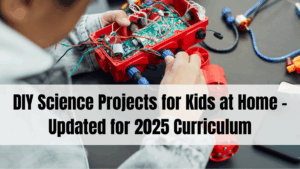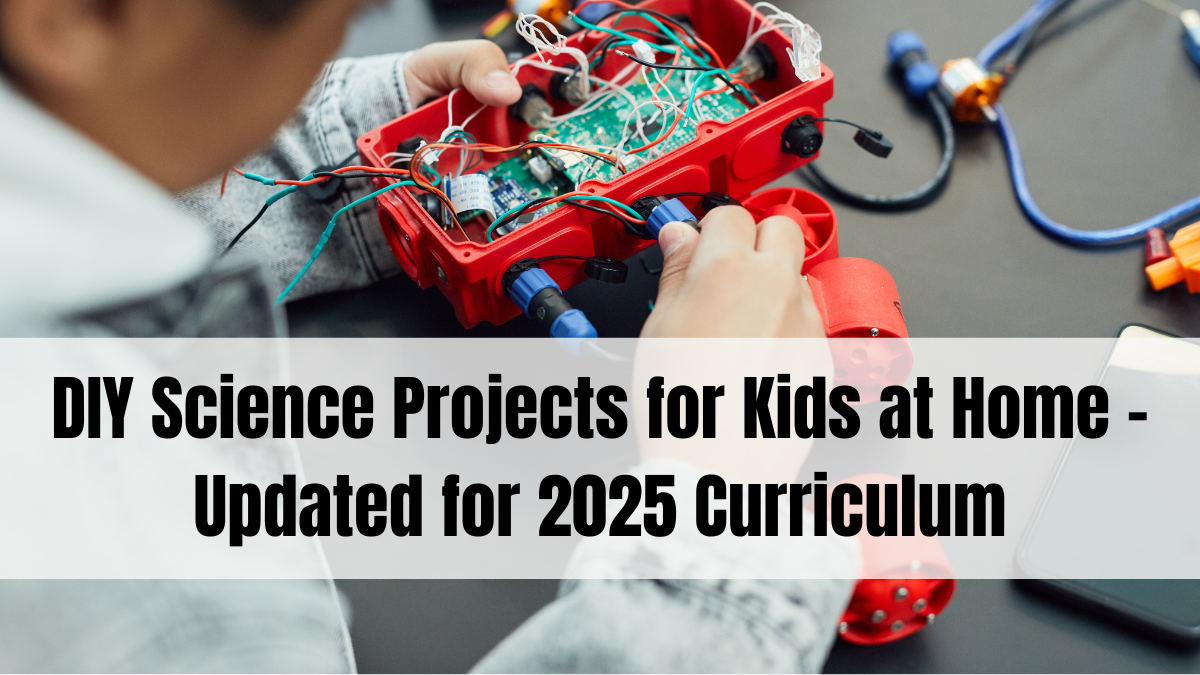Hands-on learning through DIY science projects for kids 2025 is an effective way to spark curiosity, creativity, and critical thinking in young learners. These simple, safe, and educational experiments encourage children to explore scientific concepts practically, complementing school curricula and making science fun.
This guide provides parents and educators with easy-to-follow science activities that align with modern educational goals.

Why DIY Science Projects Are Important for Kids
-
Promote experiential learning, helping kids understand abstract concepts.
-
Develop problem-solving and analytical skills.
-
Encourage teamwork and communication when done in groups.
-
Foster a lifelong interest in STEM (Science, Technology, Engineering, and Mathematics).
-
Improve observation and documentation skills through experiment recording.
Such projects bridge theory and practice, enhancing overall learning outcomes.
Easy and Safe DIY Science Projects for Kids in 2025
-
Volcano Eruption Model: Using baking soda and vinegar to demonstrate chemical reactions.
-
Plant Growth Observation: Tracking seed germination and factors affecting plant growth.
-
Rainbow in a Glass: Creating colorful layers using liquids of different densities.
-
Static Electricity Fun: Using balloons and paper to show electric charges.
-
Homemade Water Filter: Exploring filtration by layering sand, gravel, and charcoal.
All materials are easily available and safe for children under supervision.
How to Conduct DIY Science Projects Effectively
-
Choose age-appropriate experiments suited to your child’s interest and curriculum.
-
Prepare all materials beforehand to ensure smooth execution.
-
Encourage children to hypothesize before starting and observe carefully during experiments.
-
Discuss results and relate them to scientific principles.
-
Document the experiment through drawings or simple reports to reinforce learning.
This approach makes science engaging and educational.
Benefits of Integrating DIY Projects in Daily Learning
-
Enhances retention by active participation.
-
Builds confidence and independence in learners.
-
Connects classroom knowledge to real-world phenomena.
-
Encourages curiosity and questioning, foundational to scientific thinking.
-
Provides fun and interactive learning outside traditional textbooks.
Parents and teachers notice increased enthusiasm and deeper understanding among children.
The Future of Science Learning for Kids
Innovations include:
-
Integration of AR and VR for immersive experiment visualization.
-
Online platforms offering guided DIY kits and virtual science fairs.
-
Collaborative projects connecting classrooms across regions.
-
Focus on sustainability and environmental science through hands-on activities.
These trends make science accessible and exciting for all children in 2025.
FAQs
What are some easy science projects for kids at home?
Volcano eruption models, plant growth observations, rainbow liquids, static electricity, and homemade water filters.
How do DIY science projects benefit kids?
They promote hands-on learning, critical thinking, and real-world understanding.
Are these projects safe for young children?
Yes, when done with proper supervision and using household materials.
Can these projects be aligned with school curriculum?
Many DIY projects complement STEM topics covered in preschool and primary grades.
Where can I find more DIY science project ideas?
Educational websites, YouTube channels, and science kit providers offer numerous ideas and tutorials.
Click here to know more.
